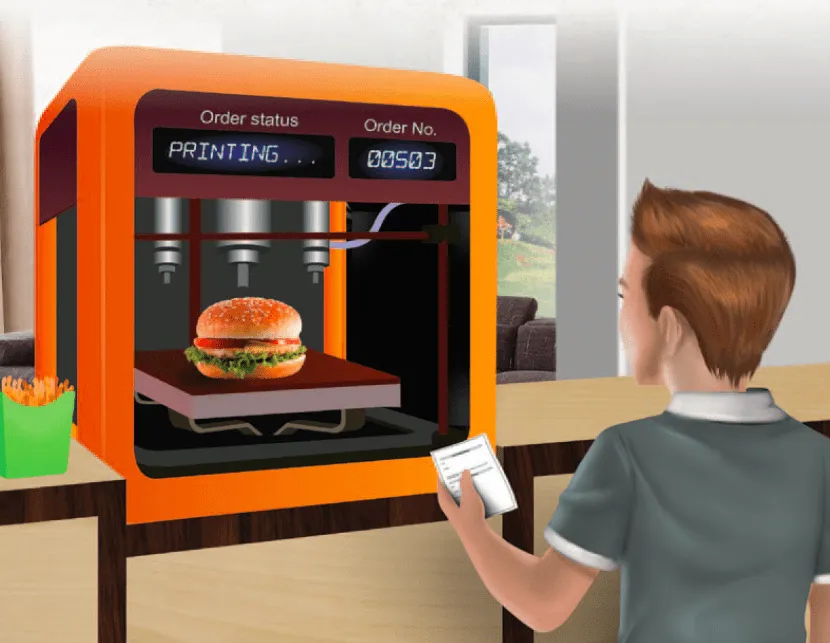Faster food: 3D print your dinner

You arrive home from school, hungry for a snack. You feel like something different; not the usual food your fridge and pantry automatically order based on what you normally eat. So you search for a treat on the internet, find one that looks good, and press print. Your 3D printer creates a ready-to-eat copy. Meanwhile, your parents are in the kitchen printing dinner. Welcome to the high-speed, low-waste, good-health world of future food.
Entree
3D printers were invented in the 1980s. Rather than print an image using a layer of ink, they can print an object using layers of plastic or metal. Through the 1990s and 2000s, 3D printing helped in the design of new products and was used to make one-off prototypes of objects. Today, 3D printers are cheaper and more widely available. They are already used in mass production of items in factories and to print objects at home.
It is early days for 3D food printing. You can buy a 3D chocolate printer, which uses melted chocolate to print chocolate pictures and objects. Similarly, a sugar-based 3D printer can print sweets in creative shapes. A 3D pasta printer can print ravioli if you top up its ‘printer cartridge’ with dough and fi lling. Other 3D printers can mix together ingredients, or use pureed vegetables, to print food such as quiche, hamburger patties or corn chips. But 3D food printers are slow, depositing one thin layer at a time. And they can’t create food out of nothing: the food shapes are made from ingredients that were already edible before being transformed by the printer.
For more on what’s cooking in the world of 3D food printing, and 41 other inventions of the future, check out our book, Imagining the Future: Invisibility, Immortality and 40 Other Incredible Ideas, by Simon Torok and Paul Holper (CSIRO Publishing), www.publish.csiro.au/pid/7344.htm.
Date Posted:
August 16, 2016
